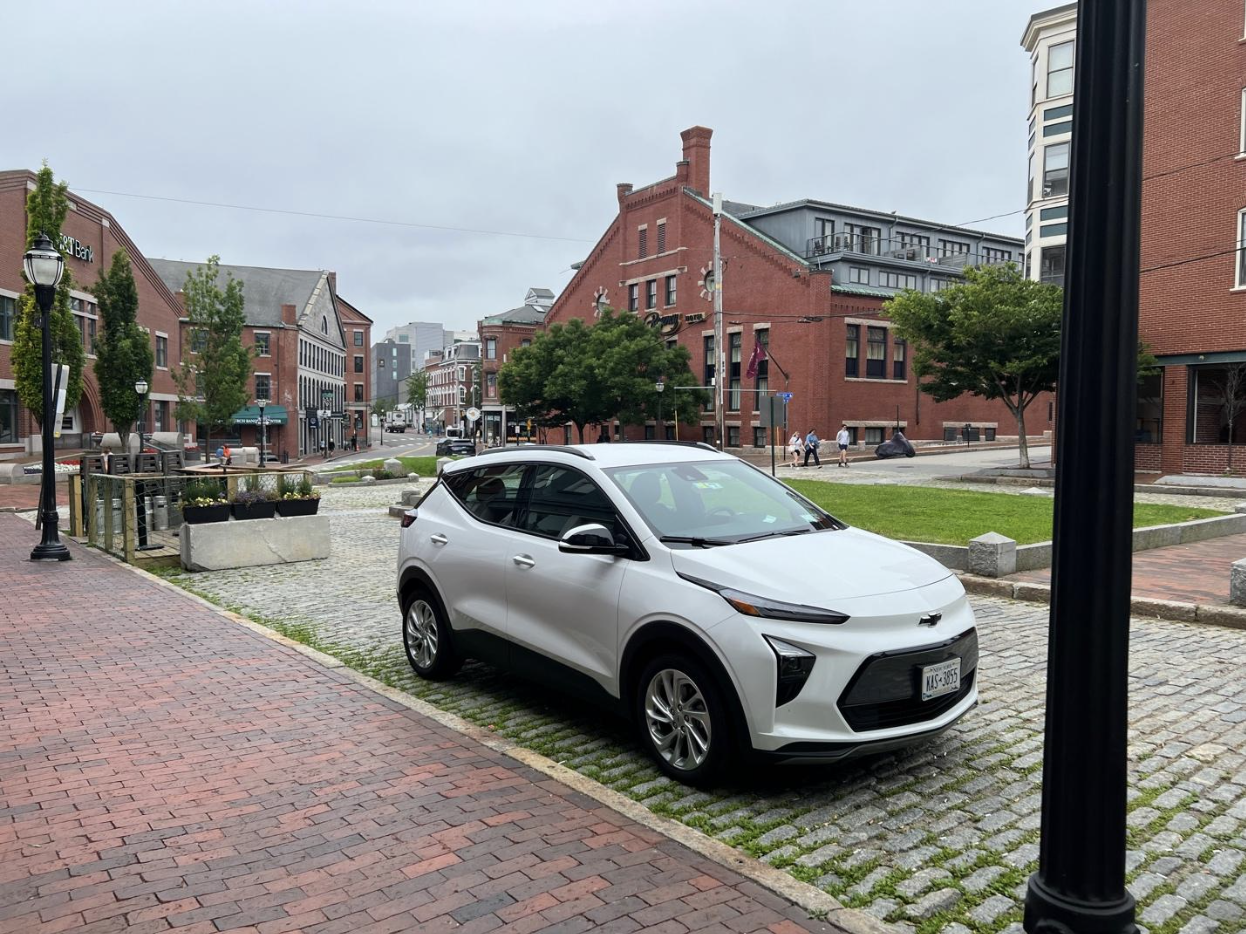A Firsthand Look at the Experience Renting an EV in the United States
On a recent long weekend trip with her sister to compete in a swimrun* race in Portland, Maine, Sarah Booth, our COO here at Sawatch Labs, got an unexpected chance to experience what it’s like to rent an EV in the United States. Read on to see more of Sarah’s experience with renting an EV, EV range strategy, planned EV charging stations, and more.
Sarah’s Electric Vehicle Rental Experience
“My sister reserved the car and selected the "manager's special" option, the most affordable option. When we arrived in Boston, they said the manager’s special that day was an EV and asked us if we were okay with that or wanted to upgrade. As an EV driver, I was excited but wanted to make sure I had all the info first. I asked which vehicle model we would get and what the range was to get a little more information about the vehicle so we would know exactly what to expect should we decide to go ahead and take it. The representative at the counter said he had no idea about what model we were going to be receiving and proceeded to list a couple of different models that it could be, one of which isn't even an EV.
Having done work with our EV analytics software for a client with operations across Maine about two years ago, I knew that public charging infrastructure was a bit limited in the state at that time. Thus, I pulled up a few different charging apps and did a quick search to see what the situation looked like. Since we were just headed to Portland, it looked like we would have a few options along the route and plenty in Portland itself. So, we enthusiastically said yes.
We got out to the car and discovered it was a Chevy Bolt EUV. Everything looked good except it was only charged to 50%, which meant that instead of making it all the way to Portland, we were going to have to charge on the way. We found a 50 kW EVgo charger off the highway at a grocery store and charged right up. We used the contactless payment option, which worked well, and the whole charging process was smooth.
Over the weekend, we needed to charge the vehicle only once more in Portland. We found a lot with three separate fast chargers, with an open port at the 350 kW station. Unfortunately, the contactless payment wasn't working so I pulled it up in my EVgo app. The charger was not listed at that location, so we had to call customer support. They walked us through how to find a charger that is prematurely named but not yet set up fully at that location. They said it should be good to go but, after four tries, we couldn't get the charging session to initiate.
Luckily, at that time a Rivian finished their charging session at one of the two other 100kW chargers, so we moved our car into that spot and were able to get it charging right away. About a week later, I checked the EVgo app again and the 350 kW charger is now listed at that location–a good sign that the customer support team took the info we provided and took action.
All in all, it was very interesting being on this experience with my sister, a non-EV driver. When I was looking for charging stations on our way back to Boston, I was a bit frustrated at the lack of options and shared with her that while there were several level 2 stations, we needed a Direct Current Fast Charging (DCFC) station so we could charge the vehicle quickly and we didn’t want to go too far off route.
She asked why there would be so many public level 2 stations if most people are going to charge at home or work and, if charging on the go, would want to be able to charge in the time it takes to eat a meal not for hours and hours. She has a point, and it’s an issue I’ve discussed for years. In a nutshell, has the previous focus on funding level 2 public charging resulted in stranded assets with extremely low utilization rates? We did find a DCFC station near our route and the charging went smoothly.
In the end, while I’m excited to see the growth in EV models available for short term rentals, I came to one conclusion: offering an EV as a manager's special is a terrible idea, and here’s why:
People who don't know how to plan, find, and manage charging their EV are going to be put in a terrible position. Renters will blame EV technology and blame the rental company for setting them up for failure.
Rental companies need to train their agents and provide information to support EV rentals, including downloadable instructions for drivers (maybe from a QR code at the counter) that gives pointers on charging and includes links to a few apps that they can download to help them find chargers along the way.
Some have speculated that using an EV as a manager’s special might be how rental car companies get you to pay for the upgrade at the counter because you're not comfortable driving an EV. I sure hope this isn't the case as it does not set up the rental company nor drivers for success.
Easing an EV Transition with Planned Charging Stations
Sarah and her sister’s experience shows the difficulties surrounding accessing charging while on road trips in the United States. Direct Current Fast Charging (DCFC) stations are crucial for EVs to achieve a full charge in a short amount of time, but the current accessibility rates of DCFC charging stations are variable around the country and low in more rural areas, which poses several issues for EV owners, travelers, and fleet managers alike.
There are a few things that fleet managers and EV owners can do to avoid these obstacles. For example, by checking out the website of their preferred charging provider, EV owners can plan their trips according to the charging stations along their routes. For a better experience, EV owners can also download apps like EVgo or Chargepoint or Electrify America, which provide real-time information on the availability of charging stations. This way, EV drivers can avoid the inconvenience of having to wait for charging spots to become available, or in case of unavailable stations, revise their routes to find an alternate charging station.
How Sawatch Labs Can Help with EV Management
As experts in EV management, our team at Sawatch Labs understands the challenges having an EV creates for fleet managers and EV drivers alike. Especially if you or your drivers are frequently traveling long distances in more rural areas of the country. However, with proper planning, EV analytics software, and telematics, it’s possible to identify when and where an EV will work for you.
*If you’re wondering what this silly thing is called “swimrun,” you can find anything you’d like to know here and chat about it with Sarah anytime.


